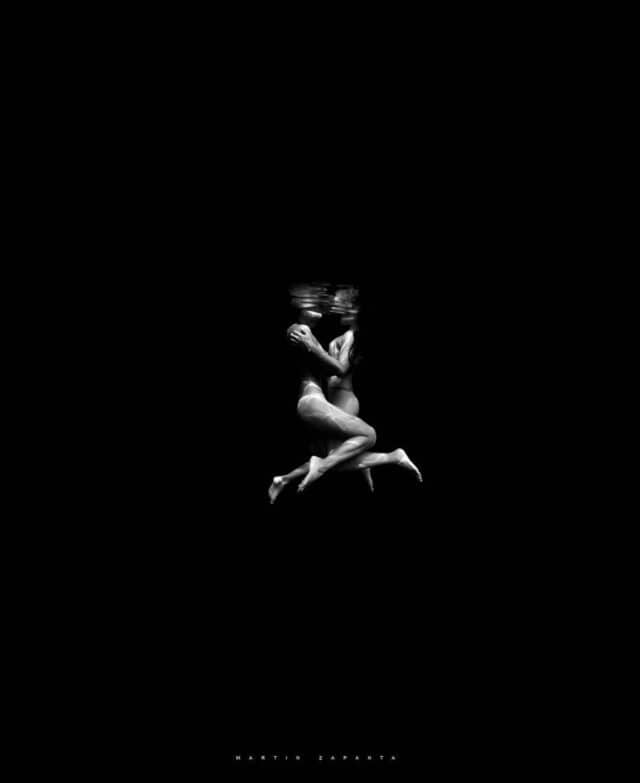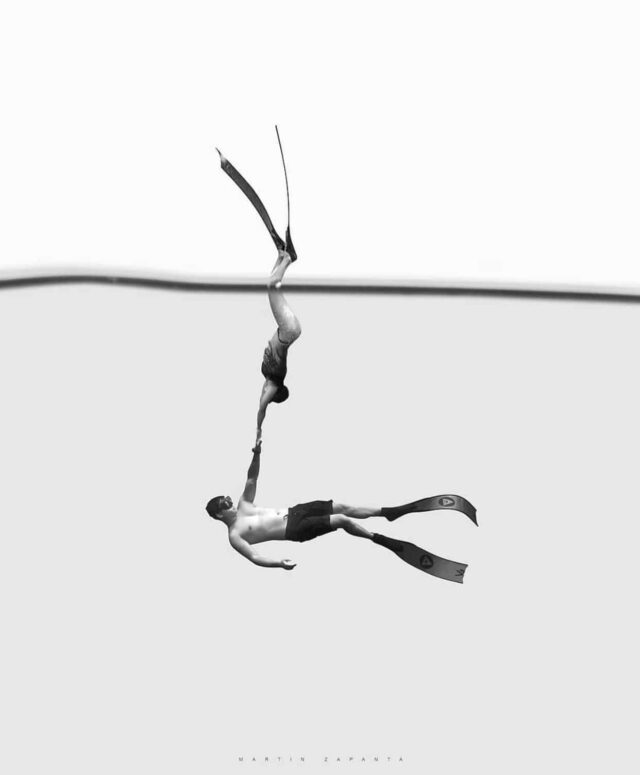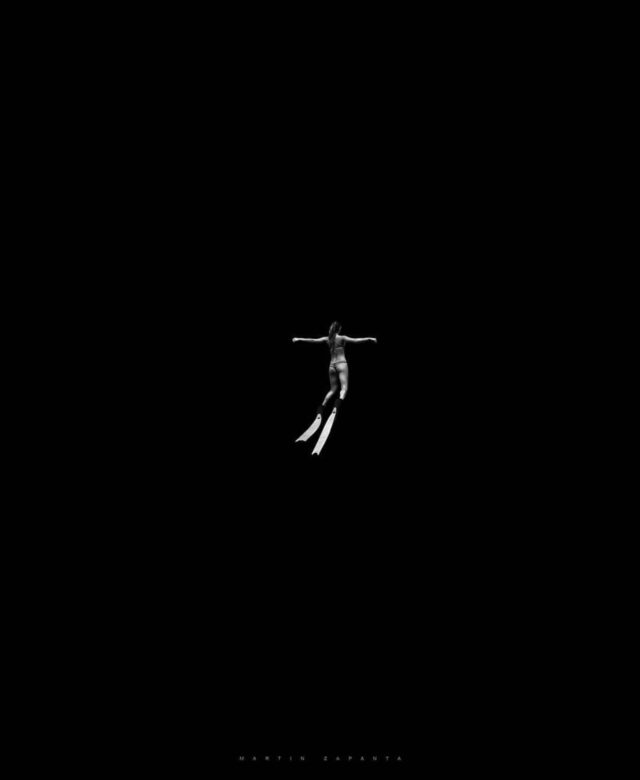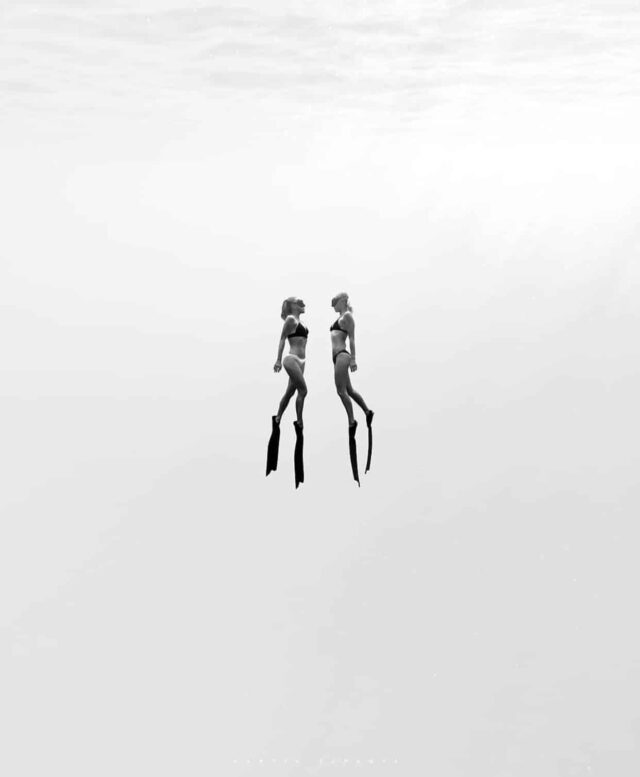Hay días en los que realmente sentimos que las redes sociales se convierten en un álbum de barajitas repetidas: todos haciendo lo mismo y de la misma manera.
Sin embargo, llega el momento en que nos tropezamos con el magnífico trabajo de alguien que nos arranca de raíz ese pesimismo. Esta vez fue Martin Zapanta, un filipino que realiza eclipsantes fotografías subacuáticas.

Muchos creerían que este apneísta llegó a este nivel fácilmente, pero se trató de mucho más que saber nadar y tener un sentido de la estética a la hora de hacer click.
Su historia dice que fue un video de gente sumergirda con delfines que le despertó el interés por el mundo subacuático en 2010.

Durante su primera inmersión con snorkel en 2011 pasó un gran susto. Zapanta no sabía cómo hacer funcionar el equipo correctamente, entró en pánico y casi se ahoga. No obstante, eso no le impidió seguir intentándolo debajo del agua y comenzó a practicar la apnea en 2013.
Ahora Martin posee récords en siete disciplinas de apnea en Filipinas. Ha trabajado como fotógrafo de moda y ha sido parte industria cinematográfica por más de 6 años. Además, sus fotografías han estado en grandes publicaciones de todo el mundo.

Pudimos hacerle varias preguntas a Martin Zapanta acerca de su trabajo con las fotografías subacuáticas. Por otra parte, teniendo como referencia de este deporte a Carlos Coste, aprovechamos para preguntarle si conocía al apneísta venezolano.
Usted es un ejemplo de que los miedos se superan al afrontarlos. ¿Por qué regresó al agua después de su primer intento fallido en Bohol?
Me hizo sentir más curiosidad sobre lo que hay ahí abajo, sobre mis habilidades y potencial de buceo.

Ver fotografías subacuáticas que muestran la vida marina es algo cotidiano. ¿Cómo logró integrar el elemento humano de manera artística?
Empecé como fotógrafo de moda, así que estoy más acostumbrado a trabajar con gente. Lo prefiero esta forma, porque la encuentro definitivamente la encuestro más divertida y atractiva.

¿Qué cámaras y lentes lo ayudan a realizar su trabajo?
Una cámara y un objetivo decentes pueden hacer el trabajo. No siempre tiene que ser de primera línea. Lo más importante son sus habilidades, no el hardware.
Significa que necesita buen ojo para los detalles, habilidades técnicas y creativas.
Ahora es un experto en apnea; pero, ¿ha estado en peligro por querer tomar una foto o un video debajo del agua?
Nunca, siempre disparo en aguas poco profundas, y nunca he estado con un gran animal marino que pueda ponerme en peligro.

¿Tiene en mente una fotografía ambiciosa que le gustaría hacer, en qué lugar, qué elementos tendría?
Sí, desde entonces siempre quise bucear y explorar diferentes cenotes en México. Me gustan las películas de ciencia ficción y de terror asiáticas, así que creo que sería genial filmar algo así en los cenotes.
Si su portafolio solo tuviera una de sus fotografías, ¿cuál elegiría y por qué?
Una imagen en blanco y negro de un apneista nadando en el mar abierto en estilo de aguas bravas. Para mí, nunca pasa de moda; es una obra de arte atemporal. Menos es más.

Solo por curiosidad, ¿conoce al apneísta venezolano Carlos Coste? Gracias a él nuestro país tiene conocimiento sobre la apnea desde hace muchos años.
Sí, todos en el mundo de la apnea lo conocen. ¡Es un gran apneista!


Martin Zapanta is a Filipino who takes eclipsing underwater photographs. He has united art and sport in his work.
If you think this freediver reached this level easily, you are wrong. His effort goes beyond knowing how to swim and having a sense of aesthetics when it comes to clicking.

A video of people diving with dolphins sparked a real interest in the underwater world in 2010.
During his first snorkel dive in 2011, he was shocked. Zapanta did not know how to operate the equipment properly, he panicked and nearly drowned. However, that didn’t stop him from trying underwater and he started freediving in 2013.
Martin holds records in seven freediving disciplines in the Philippines. He has worked as a fashion photographer and has been part of the film industry for more than 6 years. In addition, his photographs have been in major publications around the world.

We were able to ask Martin Zapanta several questions about his work with underwater photography.
You are an example that fears are overcome by facing them. Why did you return to the water after your first unsuccessful dive attempt in Bohol?
It made me more curious about what’s down there and about my diving skills and potential.
 Seeing underwater photographs showing marine life is normal, how did you manage to integrate the human being in an artistic way?
Seeing underwater photographs showing marine life is normal, how did you manage to integrate the human being in an artistic way?
I started as a fashion photographer, so I am more used to working with people, and I prefer this way because I find it more fun and engaging.
What cameras and lenses are necessary to help you do your job?
A decent camera and lens can do the job. It doesn’t always have to be top of the line. The most important thing is your skills, not the hardware. It means you need a good eye for detail, technical and creative skills.

You are now an expert in freediving, but have you been in danger for wanting to take a photo or video?
Never, I always shoot in the shallow water, and I never been with a big marine animal that can put me in danger.
Do you have in mind an ambitious photograph that you would like to take, in what place, what elements would it have?
Yes, ever since, I always wanted to dive and explore different cenotes in Mexico. I like sci-fi and Asian horror films, so I think it would be cool to film something like that in the cenotes.

If your portfolio only had one photo, which one would you choose and why?
A black & white picture of a freediver swimming in the open sea in white water style. For me, it never gets old; it’s a timeless piece of art. Less is more.
Just out of curiosity, do you know freediver Carlos Coste? We are Venezuelans and thanks to him our country knew apnea many years ago.
Yes, everybody in the freediving world knows him. He’s a great freediver!
Jennifer Marrugo
LEE TAMBIÉN:
https://www.visualectores.com/fantasia-moda-y-erotismo-las-enigmaticas-fotografias-de-zhong-lin/

